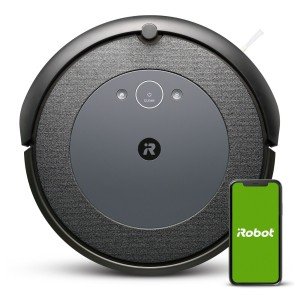What's The Job Market For Automatic Hoover Robot Professionals?
The Rise of Automatic Hoover Robots: Revolutionizing Home Cleaning
In today's hectic world, technology continues to improve the way we live and work. Amongst the innovations making a considerable effect on families are automatic hoover robots, frequently described merely as robot vacuums. These intelligent cleaning machines guarantee not only benefit but likewise efficiency in maintaining tidy living areas. This article checks out the evolution, benefits, limitations, and future of automatic hoover robots.
The Evolution of Automatic Hoover Robots
The principle of automated cleaning devices goes back to the early 20th century, but it wasn't up until the arrival of advanced robotics, sensing units, and artificial intelligence that robot vacuums became feasible. The following table shows key turning points in the advancement of automatic hoover robots:
| Year | Milestone |
|---|
| 1996 | The very first automatic vacuum is presented by Electrolux. |
| 2002 | iRobot releases the Roomba, a consumer-grade robot vacuum. |
| 2010 | Introduction of innovative mapping technology and collision sensors. |
| 2016 | Robotic vacuums start integrating with smart home systems. |
| 2020 | Increased adoption of AI and machine knowing for better cleaning algorithms. |
How Automatic Hoover Robots Work
Automatic hoover robots run using a combination of sensors and algorithms to navigate family areas. Below are crucial components that add to the functionality of these machines:

- Sensors: Lidar (light detection and varying), infrared, and cliff sensors assist the robot map the area and prevent challenges.
- Mapping Technology: Many designs now offer advanced mapping abilities, allowing effective navigation through spaces, determining high-traffic areas, and keeping in mind the layout of your home.
- Cleaning Modes: Most robot vacuums feature numerous cleaning modes, consisting of area cleaning, edge cleaning, and organized navigation.
- App Connectivity: Many contemporary styles permit control by means of smartphone apps, allowing users to set up cleansings and personalize settings remotely.
Benefits of Automatic Hoover Robots
Automatic hoover robots use a plethora of benefits, making them interesting a significant variety of customers. Here are some compelling benefits:

- Time-Saving: Users can set up cleanings and multitask while the robot does the work.
- Consistent Cleaning: Regularly scheduled cleanings make sure that homes stay tidy.
- Ease of access: Robots can clean up hard-to-reach areas like under furnishings without manual effort.
- Smart Features: Integration with smart home systems permits voice control and more sophisticated scheduling choices.
Limitations of Automatic Hoover Robots
Regardless of their advantages, automatic hoover robots have certain drawbacks that users need to consider:
- Battery Life: Most robot vacuums need charging, which can disrupt cleaning cycles.
- Suction Power: While efficient for light debris, they may fight with deeply embedded dirt or thick carpets.
- Maintenance: Regular cleaning of brushes and filters is essential to preserve efficiency.
- Expense: High-end designs can be expensive, which might be a barrier for some customers.
Future of Automatic Hoover Robots
As technology continues to advance, there are several exciting potential customers for automatic hoover robots. Here's what to anticipate in the coming years:
- Enhanced AI: Improved machine finding out algorithms could allow robots to adjust their cleaning techniques based on the specific layout and dirt levels in a home.
- Multi-Functionality: Future designs may not only vacuum but likewise mop, disinfect surfaces, or even supply real-time ecological monitoring.
- Combination with Home Automation: Increased interoperability with numerous smart home systems will likely improve control and performance.
- Sustainability: Future variations might concentrate on environmentally friendly features, including naturally degradable components and energy-efficient operations.
Often Asked Questions (FAQs)
1. How frequently should I run my automatic hoover robot?
- It largely depends upon your way of life, however running it a couple of times each week can assist preserve a clean home, particularly in high-traffic areas.
2. Can I use a robot vacuum on carpets?
- Many robot vacuums are developed to deal with carpets, but performance might differ depending upon the density and density. Always inspect the manufacturer's requirements.
3. Do robot vacuums work well with pet hair?
- Most modern-day designs are geared up with brushes and strong suction power specifically developed to manage animal hair efficiently.
4. Can I schedule cleanings from another location?
- Yes, many robot vacuums come with smart device apps that permit users to set up cleansings and control functions from anywhere.
5. How do I keep my robot vacuum?
- Regularly tidy the brushes, empty the dustbin, and change filters according to the maker's recommendations to guarantee optimal efficiency.
Automatic hoover robots represent a significant shift in the method households approach cleaning. By integrating advanced innovation with user-friendly features, these devices not only supply benefit but likewise improve performance in keeping tidy home. As advancements continue, the future of automatic hoover robots looks promising, potentially offering a lot more intelligent services for contemporary homes.
In a world where time is of the essence, the role of technology in home care is ending up being progressively important, making automatic hoover robots an exceptional investment for those wanting to simplify their lives while guaranteeing tidiness.



